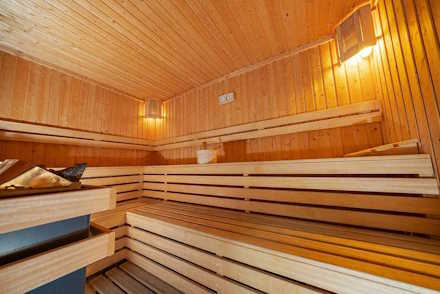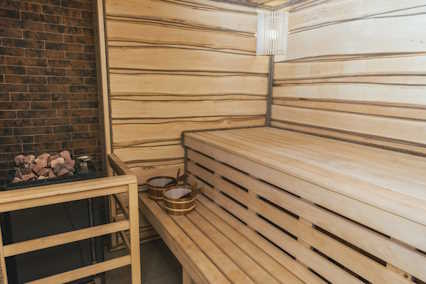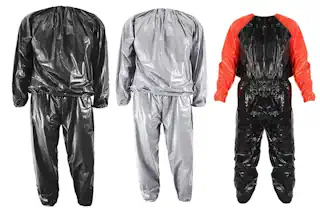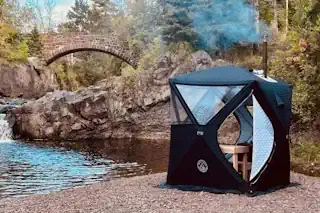Size of your Sauna: What You Need to Know
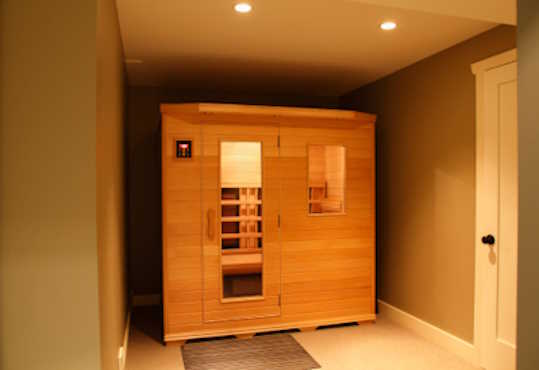
Saunas are havens of heat, relaxation, and rejuvenation. Yet, to truly bask in their benefits, you need the perfect-sized sanctuary. Size matters in the world of saunas, where too large can be a waste and too small, stifling. This comprehensive guide is designed to help you carve out the idyllic space for your personal or shared sauna dreams. From understanding the dimensions to heater selection, we’ll cover every inch of this soul-warming process.
Sizing Up Your Sauna Space
Before you can hammer a nail or stack a single panel, consider where your sauna will reside. Home for your sauna should be more than an afterthought. Begin with a corner or a room and measure twice. Consider the space available and how you want to use it. Will this be a personal escape or a social hub? For the wellness warrior, a small, intimate sauna invigorates the senses. If you’re hosting sauna soirées, consider a larger retreat.
The general rule is 15 to 20 square feet per sauna bather. This allows for a comfortable experience without feeling like the walls are closing in. But remember, your sauna isn’t just the inside dimensions; it’s the full package, which includes clearance for entry and a bit of breathing room around its edges. There should be enough space for each bench, the heater, and your movement within the sauna without feeling confined.
If you are considering building a larger sauna room for guests, proximity of a bathroom and/or shower room is an important consideration. Unlike the owner, visitors will need a change room and a shower to cleanup in when they are done.
Calculating the Perfect Size
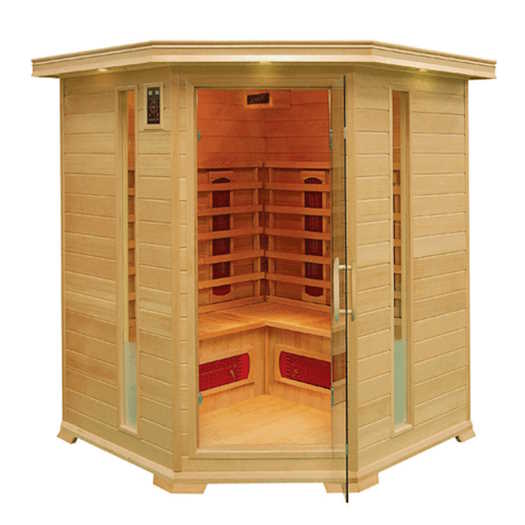
Saunas come in all shapes and sizes, but getting the right fit for you is like tailoring a fine suit. What’s your sauna’s purpose? For those seeking meditative solo sessions, a compact single person sauna may be ideal. If relaxation for two is the plan, a snug duo sauna might be just the right size.
But if your sauna’s philosophy aligns with ‘the more, the merrier,’ then a family-sized sauna or even a custom-built room might be the answer. To calculate size, consider a bare minimum of 4 square feet per bather, but the ideal user experience requires more generous spacing (15 to 20 square feet). Take height into account; a well-ventilated sauna should be at least 6 feet tall, even if you’re not shooting for NBA heights in your user demographic.
How many people will use your sauna room is a tough question for some. Most often this addition to our home gym is only used by one or two people. Are guests really going to be frequent? If not, then sitting space should be planned for the person(s) who will be in the sauna regularly.
Choosing Your Tongue-in-Groove
Now you have a space and a size, it’s time to talk sauna anatomy. The walls of your sauna can be of various building materials, but wood is the standard—for its aromatic allure and heat-retaining qualities. Decide on a wood type and thickness that suits your style and insulation needs. The popular cedar is not only resilient but also has a pleasant fragrance, perfect for creating an authentic sauna ambience.
Consider tongue-and-groove design for a seamless fit that prevents heat from escaping through cracks. The thicker, the better for insulation—with 1 3/8 inch cedar or basswood as a solid benchmark. Remember, the integrity of your sauna walls is crucial to maintaining the heat inside and ensuring efficient function.
Making a Hot Room: Choosing Your Heater
The heater is the heart of your sauna room, and size here is not up for debate. It’s a game of ratios—the heater’s kilowatt (KW) rating against the sauna’s volume in cubic feet. Undersized electric heaters will leave you in cold water, metaphorically speaking, while an overpowered one will be overkill, both in terms of maintenance and energy consumption.
Consider a smaller heater that can generate 1 KW per 50 to 70 cubic feet for traditional saunas, or 1 KW per 45 cubic feet for those who like higher temperatures. But do adjust for insulation; a well-sealed sauna may need less heating power. You’re not just choosing a heater; you’re selecting the level of luxury in your heat blast.
If your desire is to heat with a wood stove then your home gym will need to be outside probably in your back yard. The aroma is hard to beat but uneven heat can make temperature control a bit harder. Glass windows can bring the outdoor space into the tranquility of your sauna. For a cabin or other small home with limited access to power, efficiency and availability makes this a great option to consider.
DIY vs. Professional Installation
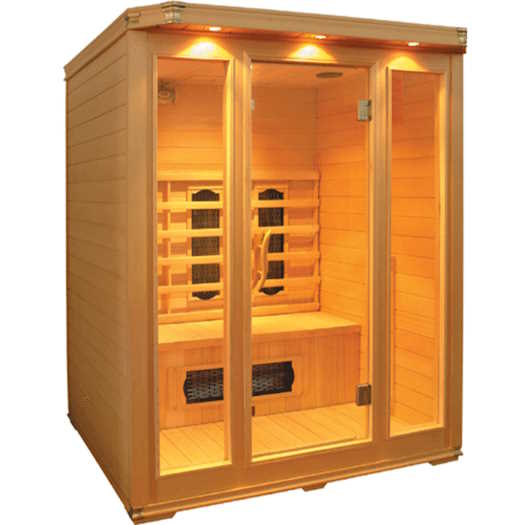
DIY sauna building offers a personal touch and can save a pretty penny. However, the investment in professionals pays dividends in quality and peace of mind. DIY enthusiasts, ensure you have the right tools and time to dedicate to your project. Know your limits—electric and plumbing work can be a different sort of sauna, and a leaky build is no place for water droplets.
Professional installation guarantees that your sauna will not only look fantastic but function impeccably. There is something reassuring about a project that begins with plans and ends with perfection, and professional installers are skilled in both the craft and the precision engineering necessary for the task.
The Air We Share: Ventilation and Layout
Breathing in the sauna should not be a concern. Adequate ventilation is non-negotiable. An exhaust vent near the upper bench will keep the air clear and pure, drawing out humidity and any potentially hazardous toxins. Plan your sauna’s layout with lots of fresh air in mind; the heater should have ample space, and the door should open outward for easy exit if the need arises.
Consider adding screened air inlets lower down to maintain the sauna’s air quality. Proper placement keeps the airflow comfortable and controlled, so your sauna is a haven, not a hot box. Outside dimensions need to include spacing for ventilation which means more room may be required than was originally planned. Basement locations can add issues for ventilation and may impact you sauna sizes.
Maintaining the Sweat Spot
Once your sauna is a steaming reality, it’s time to ensure its longevity. Keep it clean and dry. Regular maintenance will prevent damage and lengthen the life of your home sauna. Inspect for wear, especially on the bench and floor. Check the heater for any signs of malfunction, and always use water responsibly. Softwood can discolor over time from water drips if not wiped dry, so prevention pays dividends.
Invest in a good-quality thermometer and hygrometer to monitor conditions, and follow the manufacturer’s maintenance schedule for your heater. Lastly, enjoy the sauna experience—use it regularly, but don’t overdo it. Too much of a good thing, even saunas, can be… well, too much.
Optimizing the Sauna Room Experience
An appropriate sauna size is about more than just function; it’s about unlocking the full delight of sauna life. Every calculation and decision point leads you closer to executing the sauna of your dreams. Get the size right, and you’ve set the stage for an experience that rejuvenates the body and soul. Sauna sizing may seem like a small detail, but in its unassuming metrics lie the key to a relaxing, restorative, and truly enjoyable sauna experience.
In an ideal world, your sauna is custom-designed to cater to your every relaxation whim. It’s not just a warm place; it’s the right place—a veritable space suit crafted for comfort in the harsh vacuum of daily life. Whether you’re sizing a sauna for your own wellbeing or for the joy of others, may the heat be as comforting as the knowledge you’ve gained from this guide.
Frequently Asked Questions
How often should I replace the wood in my sauna?
The lifespan of sauna wood depends on usage, maintenance, and material type. Cedar, for example, is very durable and can last for years with proper care. Inspect your sauna annually for signs of wear or damage, but replacement is typically needed only when there are visible signs of deterioration such as rot, splintering, or significant discoloration.
Can I use essential oils in my sauna?
Yes, essential oils can enhance the sauna experience, but they should be used responsibly. Add a few drops to the water you sprinkle on the heater rocks to create a scented steam. Be cautious with the amount, as oils are potent and some can damage wood or irritate skin.
Is it safe to install a sauna in my apartment or smaller home?
Installing a sauna in a smaller space can be challenging but is certainly doable with careful planning. Key considerations include ventilation, waterproofing, and ensuring you have the appropriate electrical infrastructure. It’s recommended to consult with a professional to assess the feasibility and ensure compliance with any building codes or regulations. Choosing the right location is huge for a smaller living space.
How can I make my sauna more energy-efficient?
To improve energy efficiency, consider insulation choices during the construction phase—thicker walls can help contain heat. Opt for a modern heater that is correctly sized for your sauna; newer models are often more energy-efficient. Also, turning off the sauna immediately after use and not overfilling it can minimize energy consumption.
What’s the best way to clean my sauna?
Keep it simple and natural. A solution of mild soap and water is effective for cleaning benches and surfaces without harming the wood. Avoid harsh chemicals which can damage wood surfaces and leave unwanted residues. For deeper cleans, consider a sauna-safe wood cleaner. Always ensure the sauna is completely dry after cleaning to prevent mold and mildew growth.
Remember, every sauna experience is a personal retreat. By maintaining and caring for your sauna with these guidelines in mind, you ensure a sanctuary that provides endless comfort and relaxation.
